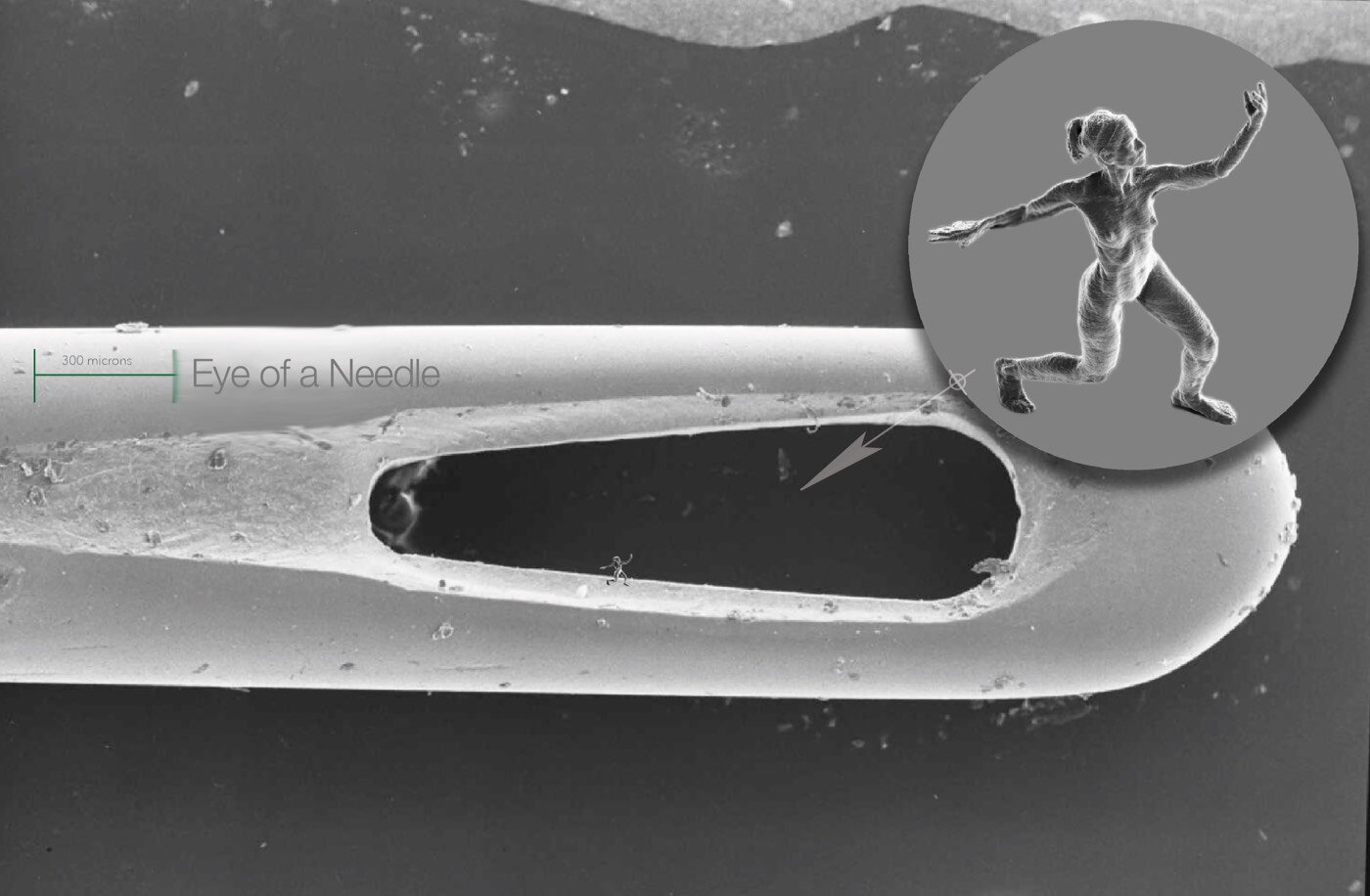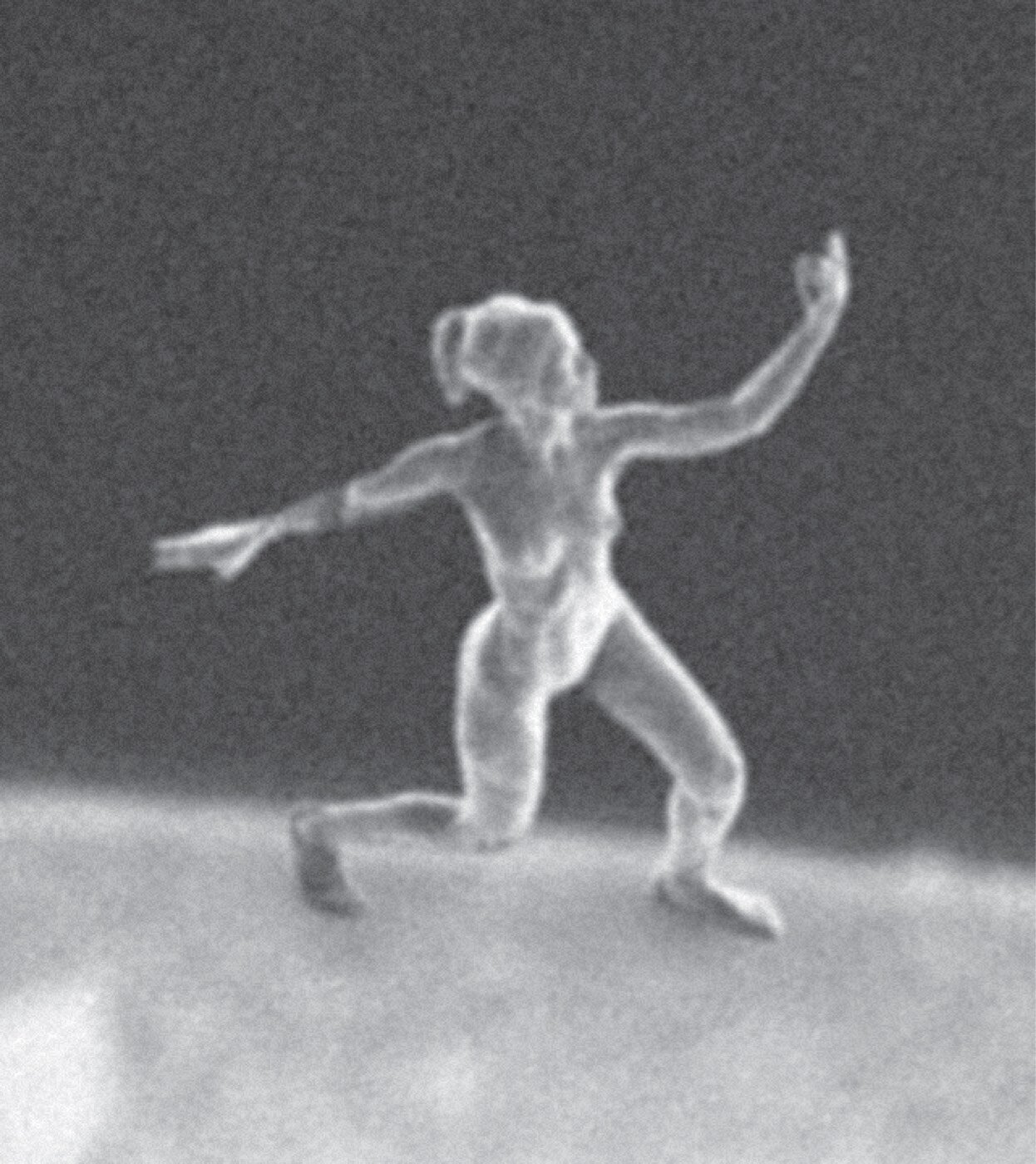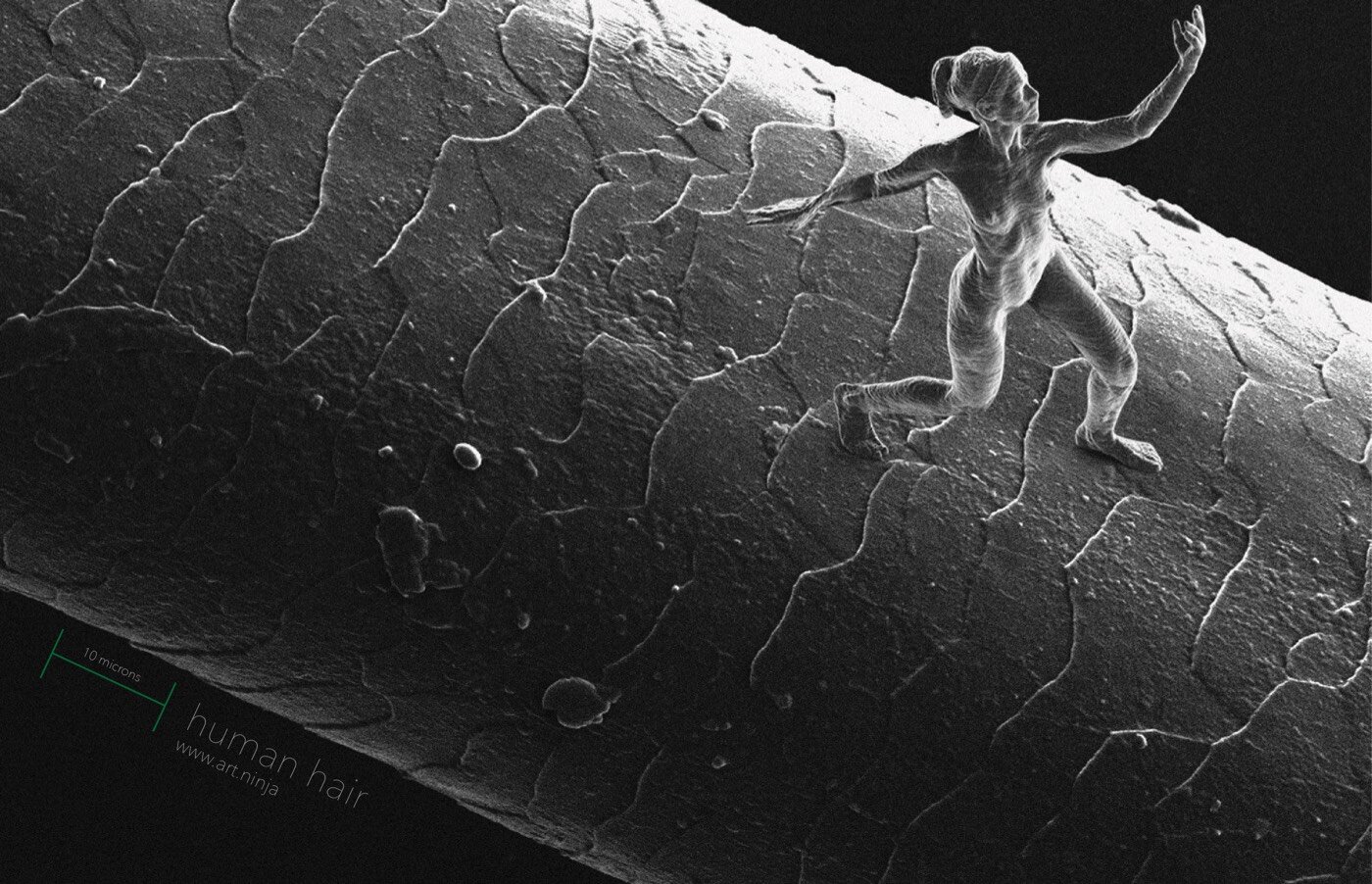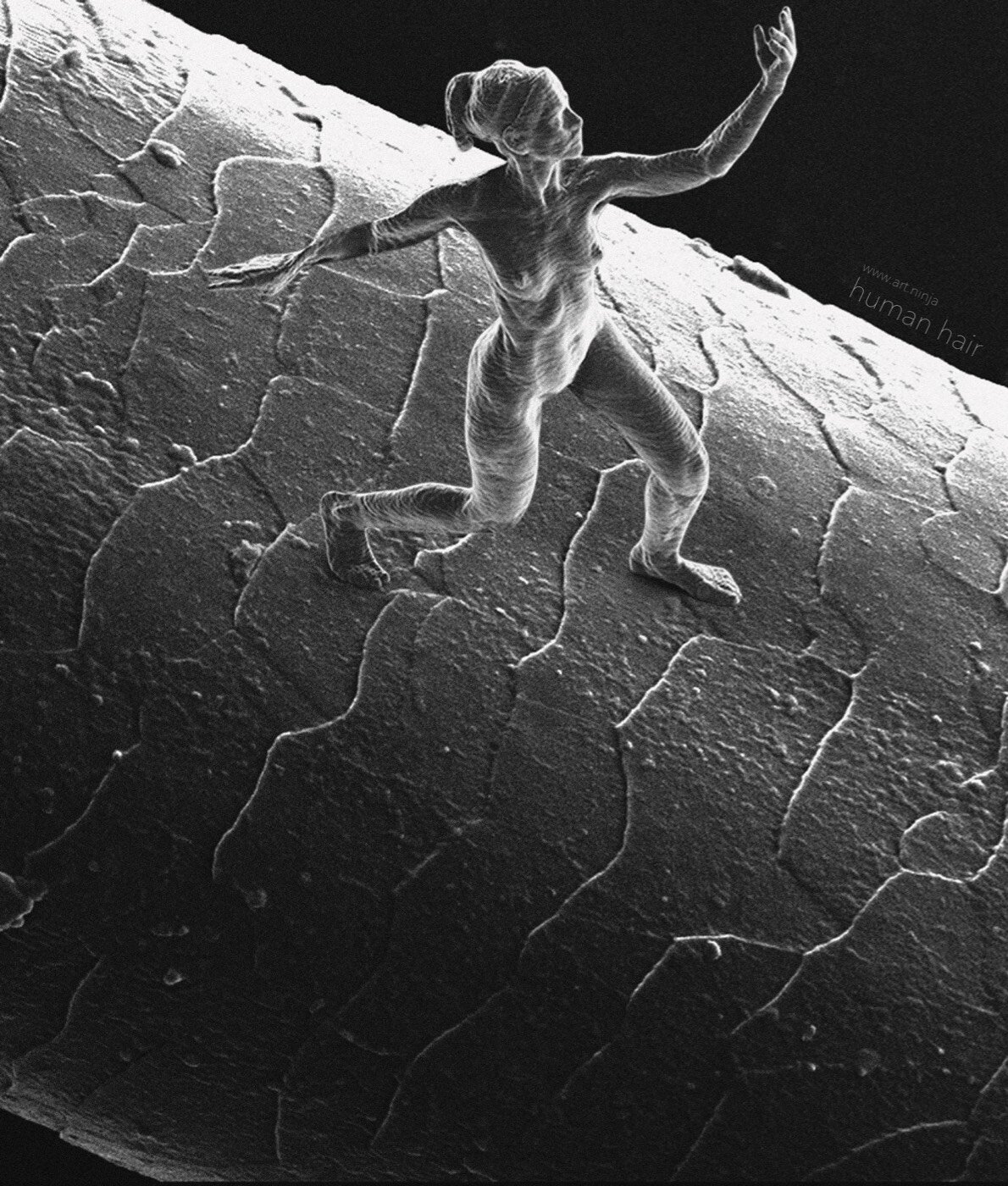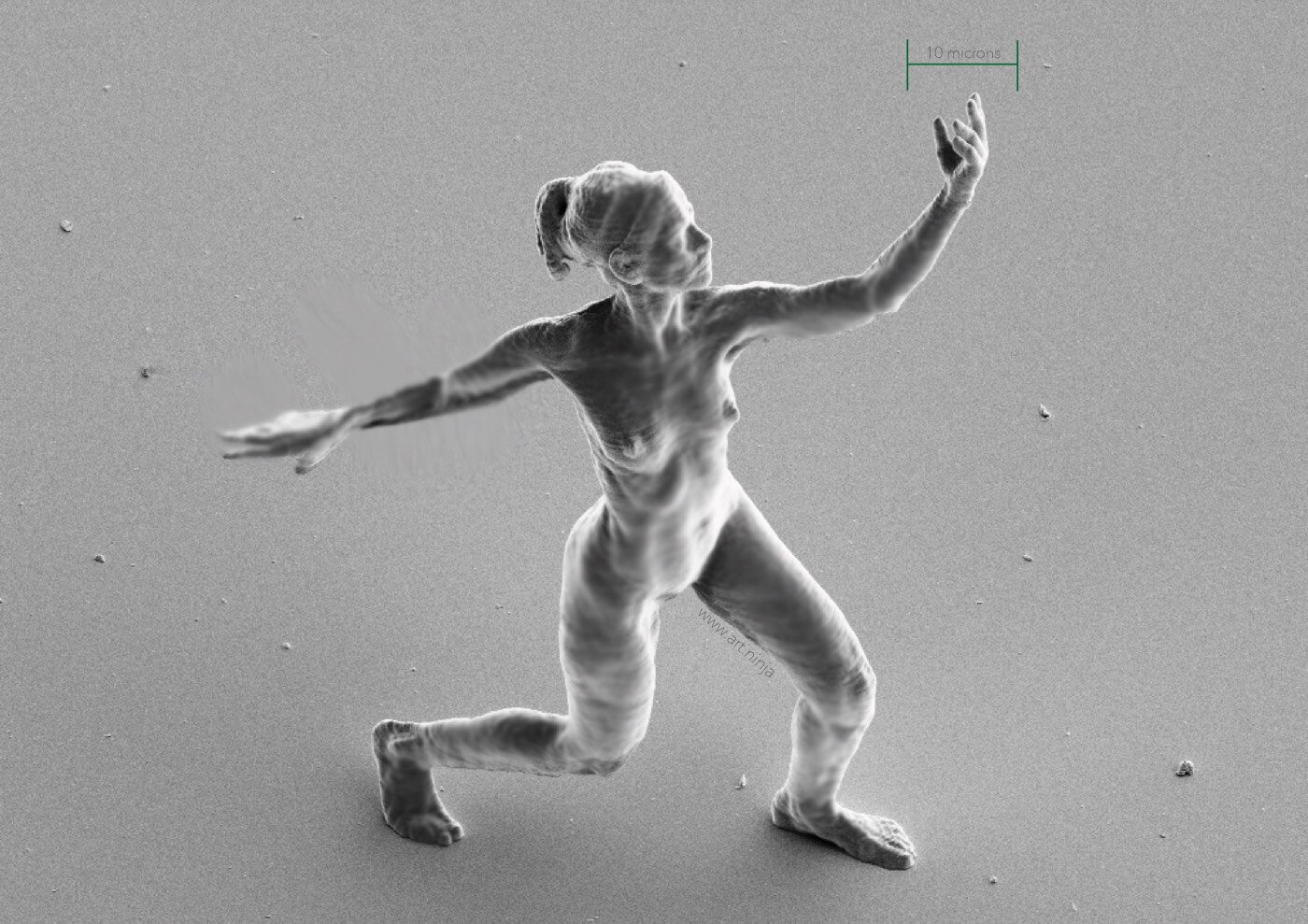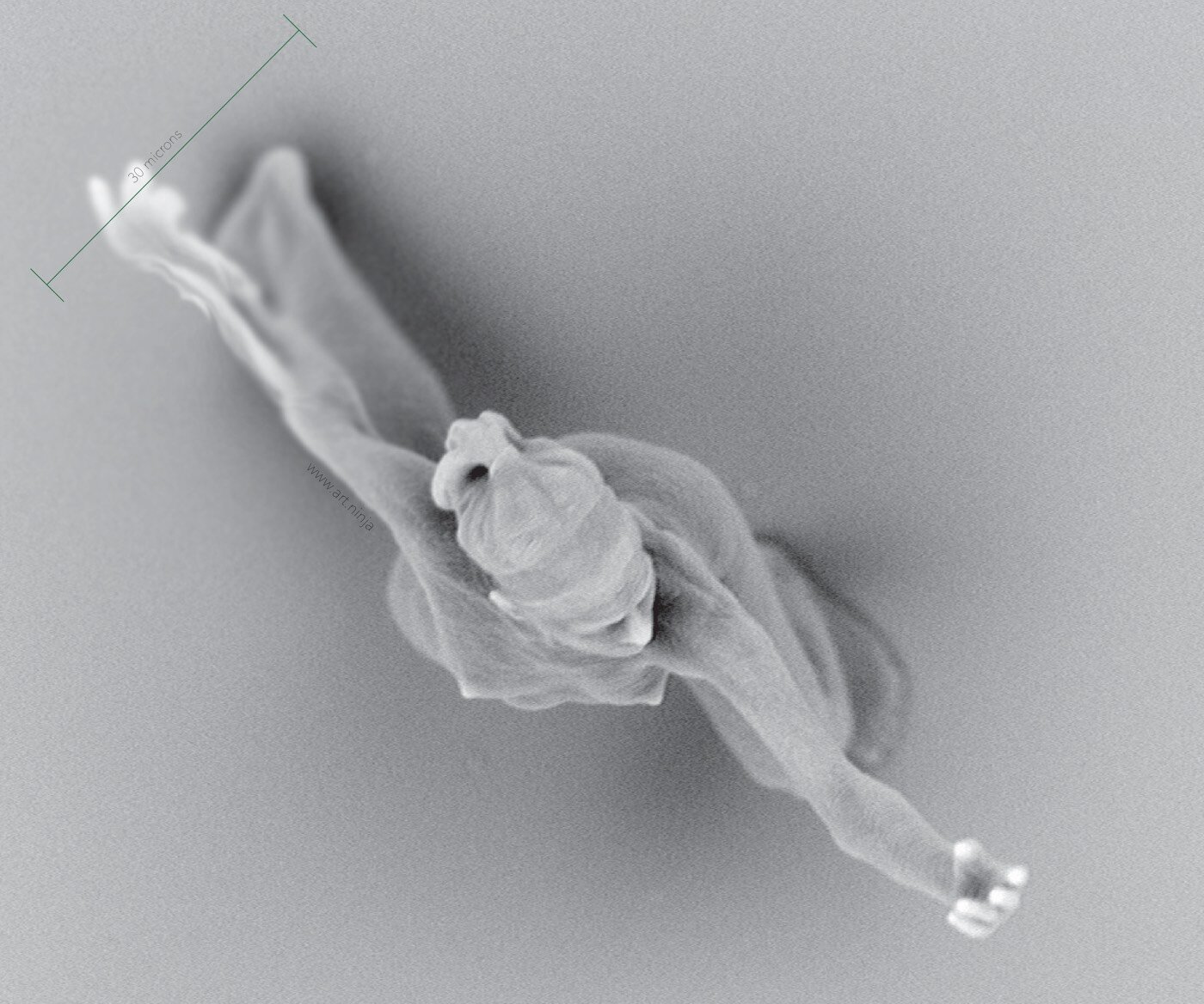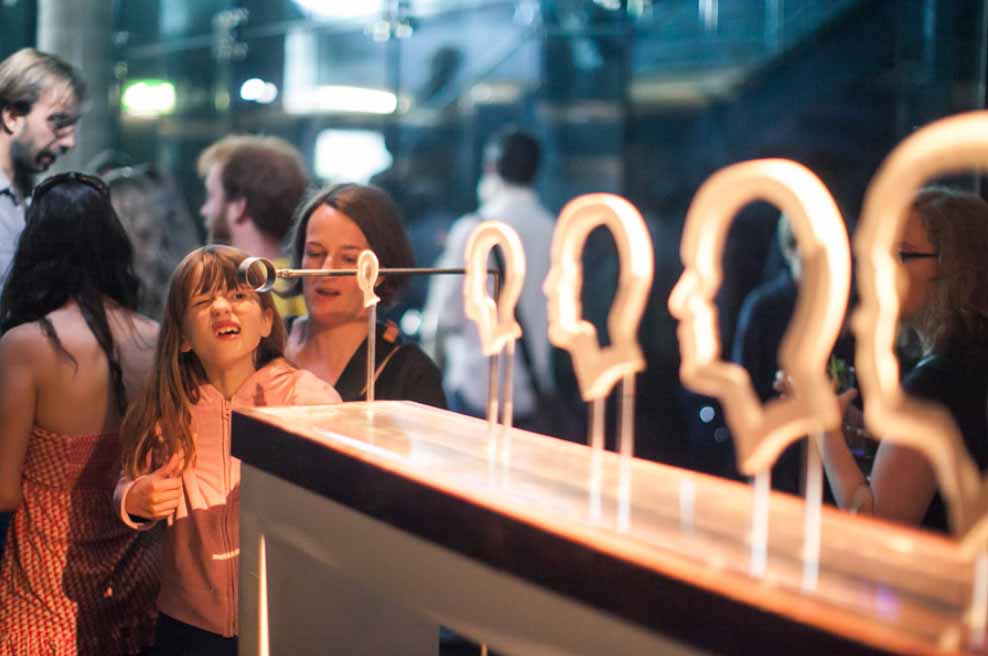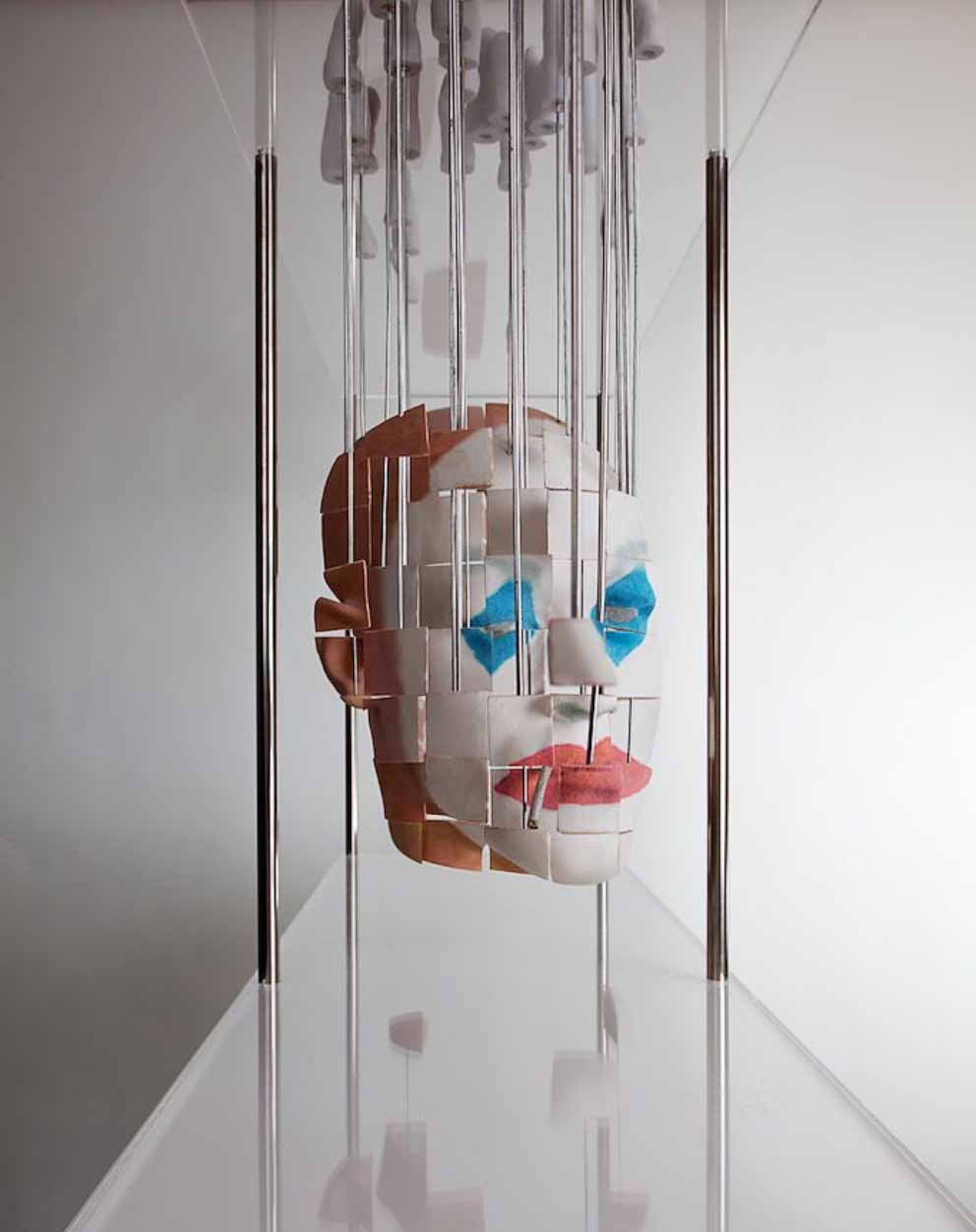In 2014, Hurwitz pioneered a new sculptural technique in the field of Nanoart using multiphoton lithography and photogrammetry to create the world's smallest human portraits of his first love. The works of art were inspired by the nineteenth century marble sculpture of Cupid and Psyche by Antonio Canova, part of the permanent collection of the Louvre Museum, Paris. Hurwitz's works are so tiny that they are invisible to the human eye, able to be placed on the forehead of an ant. Smaller details of the works are at approximately the 300 nanometer scale, similar to the wavelengths of visible light and are therefore near impossible by the laws of physics to see in the visible spectrum. The only way to observe these works is through a non-optical method of magnification like a scanning electron microscope. To create these works Hurwitz collaborated with a team of over 20 people, including Stephan Hengsbach of the Karlsruhe Institute of Technology and Yehiam Prior of the Weizmann Institute of Science, an art project centred in the world of academic physics. In February 2015, Hurwitz's sculpture "Trust" was awarded the world record for the "Smallest sculpture of a human" by the Guinness Book of Records.
Is this the world’s smallest sculpture?
‘CNN Ones to Watch’ captures Hurwitz’s figure of a woman who can only be viewed through a microscope, as she dances delicately on a single strand of human hair. His quest to merge art and science is limitless – he makes vast bronze sculptures using algorithms and mirrors which play with perspectives.
The programme follows Hurwitz in the laboratory at one of the world’s leading universities in engineering and natural sciences, Karlsruhe Institute of Technology in Germany, as the alchemist turned artist crafts a new work.





